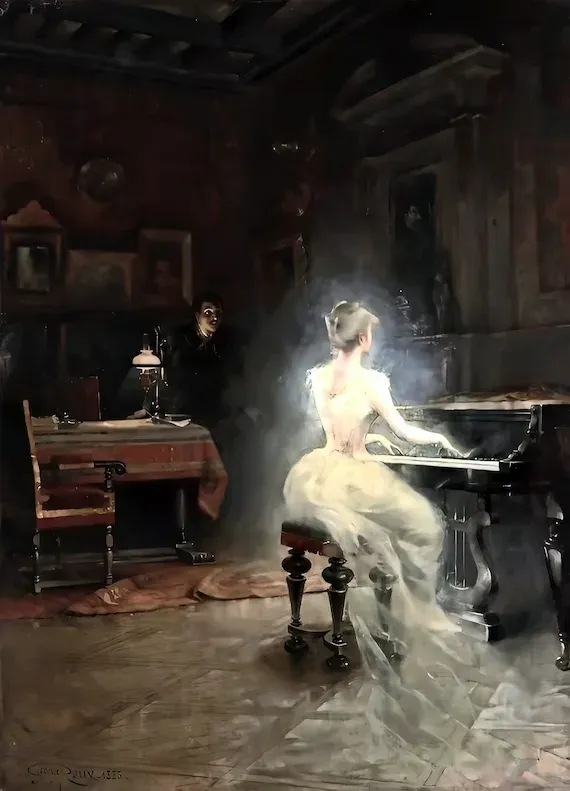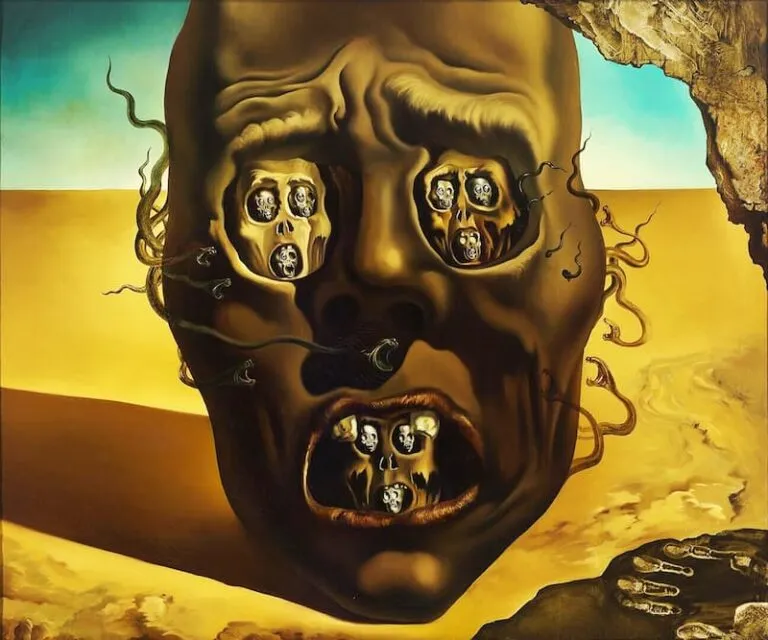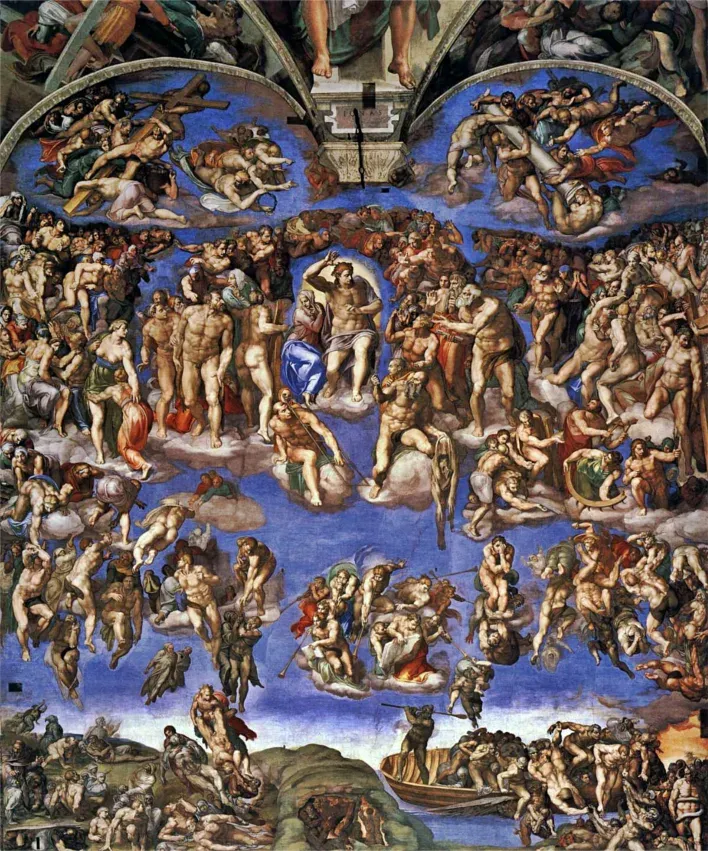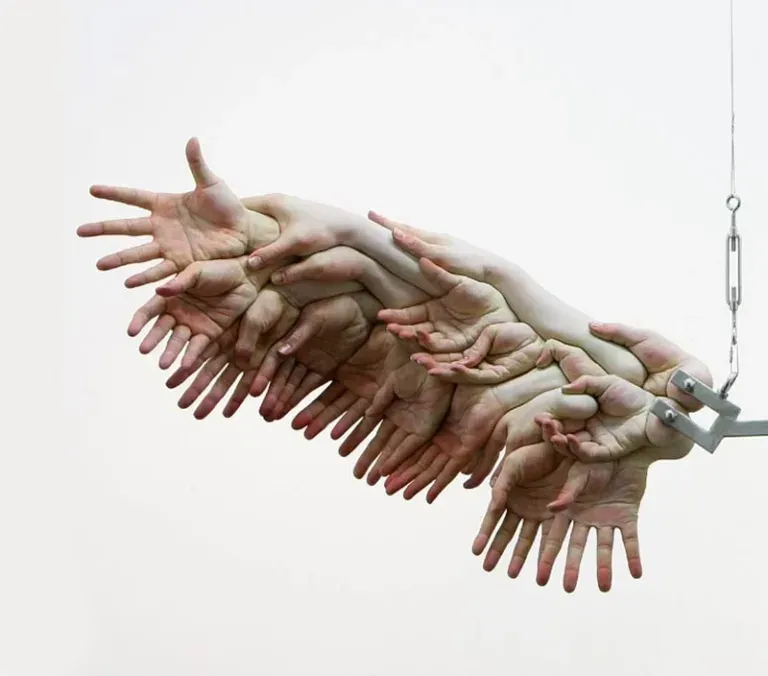Spirit
Spirit of George Roux (1885): A Journey into the Ethereal
George Roux (1853-1924) was a prolific French artist and illustrator. Born on December 10, 1853, in Paris, Roux showed early artistic talent and studied under the guidance of his father, who was also an artist. Specializing in historical genre painting and illustration, Roux gained fame particularly for his illustrations for the novels of Jules Verne, significantly contributing to the visual imagery of many literary works of the time.
The Painting
George Roux, a French painter renowned for his mastery in depicting historical and fantastical scenes, gifts us with a captivating work titled “Spirit.” Created in 1885, this painting evokes a mysterious and transcendent atmosphere.
Artistic Style
Roux, with his detailed and precise style, captures the attention of observers. “Spirit” stands out for its realistic rendering of details and the skillful use of light, creating an ethereal atmosphere that envelops the viewer.
Interpretation
The painting depicts a man seated at his desk, deeply immersed in contemplation or perhaps in a dialogue with the beyond. The presence of symbolic elements, such as the use of light and shadow, suggests a connection between the earthly and the spiritual world.
Mysterious Atmosphere
Roux’s choice to focus on the human figure in an apparently ordinary setting, yet permeated with a sense of mystery, raises questions about the nature of existence and the interaction between the tangible and the intangible.
Artistic Legacy
“Spirit” bears witness to Roux’s versatility in navigating between different artistic genres. His ability to create works that capture the imagination and challenge traditional perception is a hallmark of his talent.
“Spirit” by George Roux continues to enchant viewers, offering an intriguing window into parallel worlds and stimulating reflection on the connection between the visible and the invisible.







